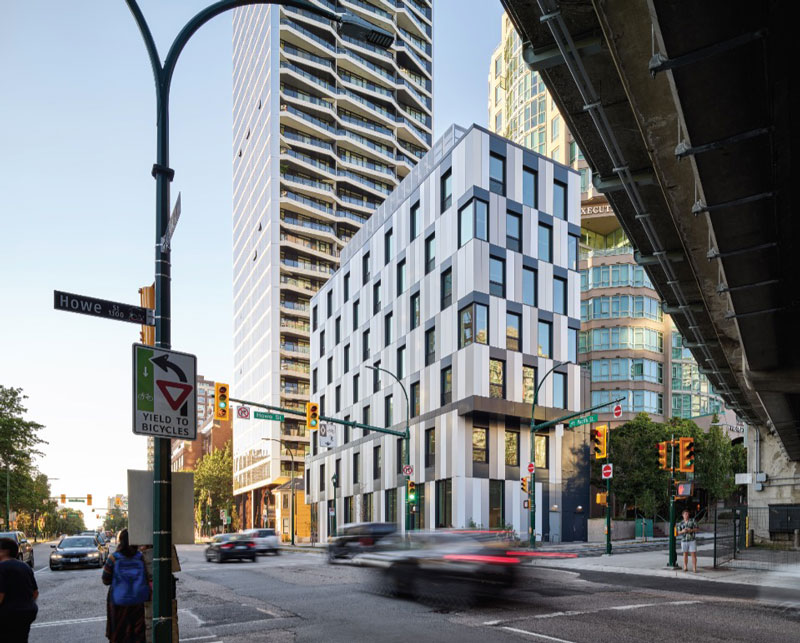
By: Chris Ballard
We are pleased to participate in the Passive House issue of SABMag. Builders, and the building industry, have a crucial role to play in the struggle to adapt to and mitigate the effects of climate change, and I foresee that Passive House is going to play a big part in addressing that struggle.
Our built environment is a major contributor to climate change. In large urban areas, emissions from buildings contribute over 50 per cent of greenhouse gas (GHG) emissions, and over 30 per cent globally. As governments set ambitious targets to reduce GHGs, builders are going to be increasingly called upon to deliver higher performance buildings.
At the same time, Canada is grappling with a national housing crisis. In Ontario alone, the provincial government has promised no less than 1.5 million new homes by 2031. We know we can’t build our homes to previous standards because of climate change – and governments at all levels are beginning to insist new buildings be built to increasingly high-performance standards. Still, it’s those on the ground — architects, contractors, skilled trades and developers, as well as lenders — who will ultimately become the gatekeepers for better, low energy consumption builds.
Industry players are key to educating homeowners and the public as to the standards that will deliver on the promise of high-performance buildings that achieve net-zero or near net-zero carbon without relying on carbon offsets or renewable energy add-ons. We see “green” standards everywhere, and there are numerous claims as to the efficiency of each.
While I’m not here to make claims for or against other standards, I will say that “green washing” is a major problem — and not just our industry. Still, it is an issue we need to address head on, and tackle collectively, through education and verification.
There are, currently, enormous burdens on our power grids. As extreme weather events escalate, our cities and towns face ever greater risks of blackouts and grid failures. We need to enter this into the equation and build homes that will reduce those burdens by ensuring cooling and heating loads are minimized through good design and construction. We need buildings that can keep people safe and comfortable at home, even in the event of power outages, or extreme heat and cold. Passive House provides one such solution. The alternative is stark. Take, for instance, the horrifying situation arising from B.C.’s 2021 heat dome, which caused the deaths of 619 people.
People in our industry are often stymied due to the very simplicity of the Passive House standard, because it advocates for passive energy consumption — through airtight building envelopes, superior ventilation, and other passive conservation techniques. Buildings that consume far less to heat and cool than the average home, rather than more, can be a difficult concept to grasp, but that is precisely what Passive House delivers.
We now have nearly 50 years of science-driven data to back up these claims, and Passive House has been recognized as the standard to meet for affordable, high-performance buildings.
And, as our industry moves further into discussing the role of operational carbon and embodied carbon, Passive House is likewise evolving. The Passive House community can employ a new PHRibbon tool that helps calculate embodied carbon over the life of the building, a tool which also models future increases to average temperatures.
Passive House Canada is likewise poised to support the building industry, as financial institutions and governments more and more make investment decisions based on Environment, Social and Governance (ESG) policies of the developer, and of its design, engineering and construction companies. Passive House is perfectly suited to address the “Environment” in ESG, and we would be delighted to explain how.
Resilient buildings which keep people safe and comfortable should be the norm, not the exception, and that is precisely where I want to leave this thread. As builders, you have enormous power to transcend building policies and their real-world impacts. Get educated. If you haven’t already been trained and certified in Passive House, I urge you to do so. If price is an issue, know that government grants are available, and we offer competitive pricing for Passive House members.
Become an advocate of better buildings. Educate your clients, your manufacturers, and your government. Insist on high performance projects that live up to their promise — not just in five years, but in 25 or 50. Finally, I urge each of you to simply build better. We’ll all feel better, and live better, for your efforts.
Chris Ballard is a former minister of both housing and environment and climate change for Ontario, and is currently the CEO of Passive House Canada, a national non-profit professional association that advocates for high-performance buildings using the Passive House standard.
SUBSCRIBE TO THE DIGITAL OR PRINT ISSUE OF SABMAGAZINE FOR THE FULL VERSION OF THIS ARTICLE.
